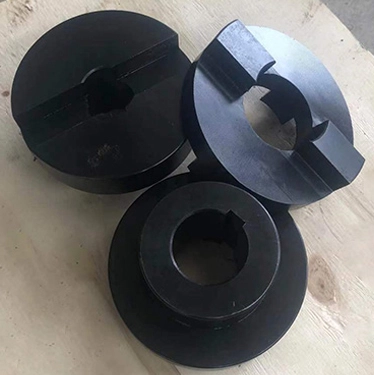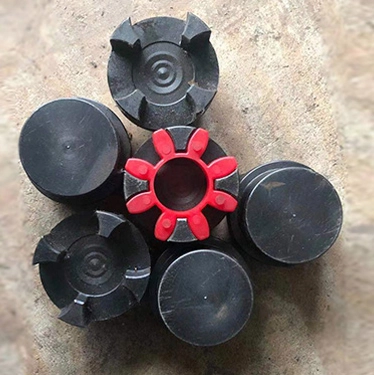A coupling is a device used to connect two shafts together at their ends for the purpose of transmitting power. The primary purpose of couplings is to join two pieces of rotating equipment while permitting some degree of misalignment or end movement or both. In a more general context, a coupling can also be a mechanical device that serves to connect the ends of adjacent parts or objects. Couplings do not normally allow disconnection of shafts during operation, however there are torque-limiting couplings which can slip or disconnect when some torque limit is exceeded. Selection, installation and maintenance of couplings can lead to reduced maintenance time and maintenance cost.

Couplings are used in machinery for several purposes.
A primary function is to transfer power from one end to another end. (ex: motor transfer power to pump through coupling)
Other common uses:
To alter the vibration characteristics of rotating units.
To connect the driving and the driven part.
To introduce protection.
To reduce the transmission of shock loads from one shaft to another.
To slip when overload occurs.

According to different connection methods and working principles, couplings can be roughly divided into the following categories:
Beam coupling; Bush pin flange coupling;
Clamp or split-muff coupling; Diaphragm coupling;
Elastic coupling; Disc coupling;
Flexible coupling; Gear coupling;
Rigid coupling.
(Coupling is a broad noun concept. Under each category, there are more detailed categories that serve different industries.)
A. The magnitude and nature of the required transmission torque, the requirements for buffering and vibration reduction functions, and whether resonance may occur.
B. The relative displacement of the two axis axes caused by manufacturing and assembly errors, shaft loading and thermal expansion deformation, and relative movement between components.
C. Permissible dimensions and installation methods. In order to facilitate the necessary operating space for assembly, adjustment and maintenance. For large couplings, it should be possible to disassemble and assemble without the shaft moving axially.
In addition, conditions such as working environment, service life, lubrication, sealing and economy should also be considered, and then carefully refer to the characteristics of various couplings to select a suitable coupling type.
0531-69959201
lqg18653457231
+86-18653457231
No 12111,Jingshi Road, Lixia District, Jinan City, Shandong Province. P.R. China
 English
English  日本語
日本語  français
français  Español
Español  русский
русский  português
português  العربية
العربية  tiếng việt
tiếng việt  ไทย
ไทย  Polska
Polska  română
română 



